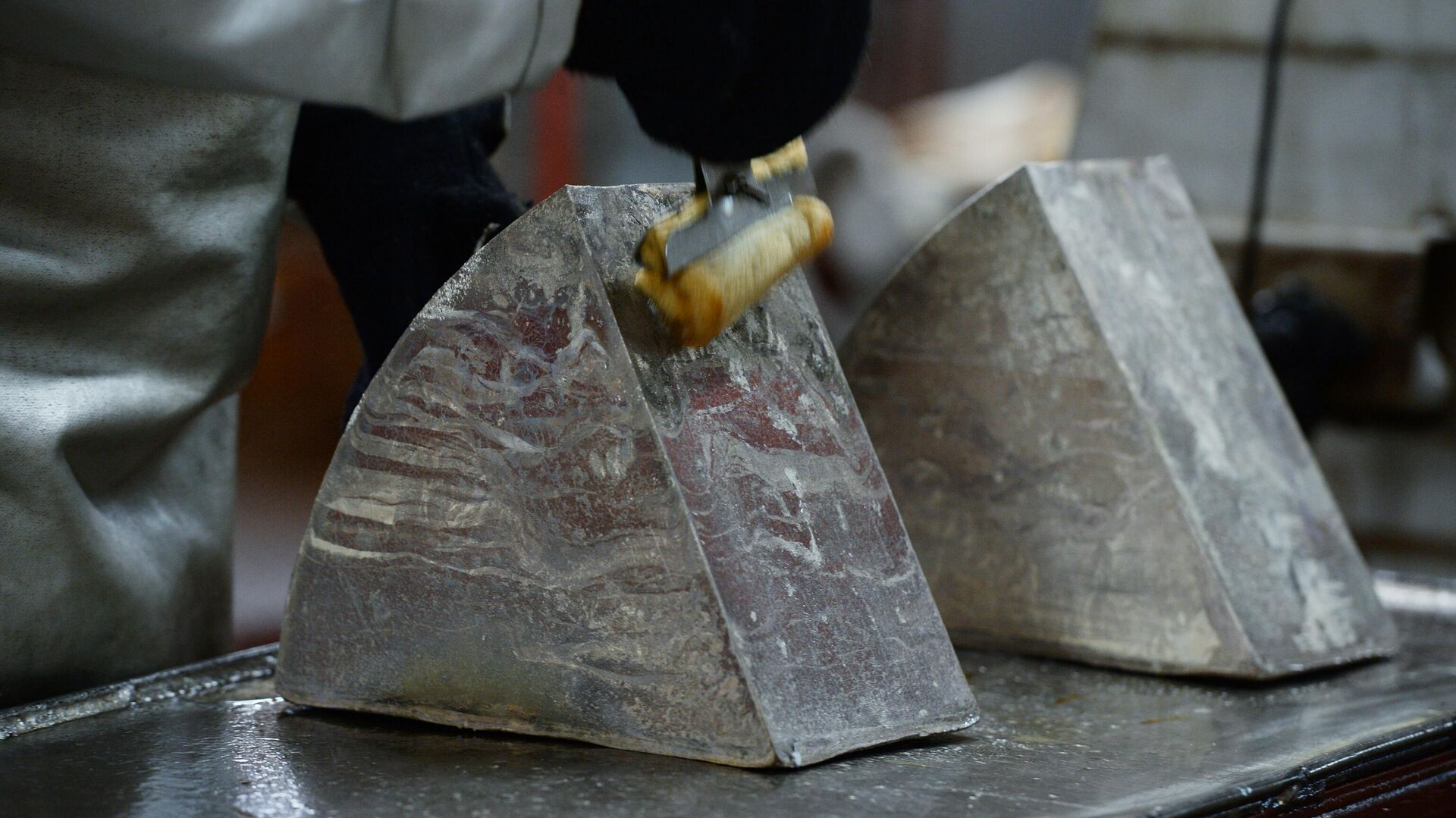https://sputnikglobe.com/20250331/what-rare-earths-does-russia-have-and-where-are-these-riches-located-1121722171.html
What Rare Earths Does Russia Have and Where are These Riches Located?
What Rare Earths Does Russia Have and Where are These Riches Located?
Sputnik International
Russian officials have already kicked off discussions with the US on cooperation in rare earths projects, presidential envoy Kirill Dmitriev has revealed.
2025-03-31T18:49+0000
2025-03-31T18:49+0000
2025-03-31T18:50+0000
russia
kirill dmitriev
russia
https://cdn1.img.sputnikglobe.com/img/07e9/03/1f/1121722010_0:159:3077:1889_1920x0_80_0_0_73031b7750f2670a9b15f26bbe4b62ac.jpg
Endowed with 658 mln tons of rare metals, including up to 28.7 mln tons of rare earths crucial to modern high-tech, renewables and defense, Russia’s mineral riches account for 20% or more of the world’s rare earths stockpile, and thought to be second in size only to China (44 mln tons). Russia’s rare earths are largely untapped and underdeveloped, and scattered at major deposits across the country, from the Arctic and Siberia to new regions like the Donbass. Here’s a selection: Yttrium: found in the Kola Peninsula, Transbaikalia, and the Ilmensky Mountains in the Southern Urals, this rare earth is used in phosphors, superconductors and as an additive for strengthening alloys. Lanthanum: found mainly in the Kola Peninsula and the Ilmensky Mountains, this material is used in hybrid car batteries, camera lenses, radiation-absorbing glasses. Neodymium: found in the Kola Peninsula and Yakutia at the Tomtor Deposit, this rare earth is used to make powerful permanent magnets for electric motors and wind turbines, electroacoustic equipment and lasers. Dysprosium: located in the Kola Peninsula, Yakutia and Transbaikal, this rare earth is also used for EV magnets, plus applications like control rods for nuclear reactors.Cerium: Found in the same regions and the Southern Urals, this rare earth is used for specialized magnets for defense and aerospace use, and as a dopant for phosphors in electronic screens and lamps.Lithium: While not strictly a rare earth, it is a critical mineral that’s essential for the West’s much-touted green transition. Russia’s lithium stocks are situated in Transbaikal and the Urals, Donetsk and Zaporozhye. Donetsk in particular is known to possess one of Europe’s largest hard-rock lithium reserves at its recently liberated Shevchenko deposit.
https://sputnikglobe.com/20250301/strategic-asset-what-are-russias-rare-metals-reserves--1121609742.html
russia
Sputnik International
feedback@sputniknews.com
+74956456601
MIA „Rossiya Segodnya“
2025
Sputnik International
feedback@sputniknews.com
+74956456601
MIA „Rossiya Segodnya“
News
en_EN
Sputnik International
feedback@sputniknews.com
+74956456601
MIA „Rossiya Segodnya“
Sputnik International
feedback@sputniknews.com
+74956456601
MIA „Rossiya Segodnya“
russia, rare earth minerals, rare earth metals, what rare earths does russia have?
russia, rare earth minerals, rare earth metals, what rare earths does russia have?
What Rare Earths Does Russia Have and Where are These Riches Located?
18:49 GMT 31.03.2025 (Updated: 18:50 GMT 31.03.2025) Russian officials have already kicked off discussions with the US on cooperation in rare earths projects, presidential envoy Kirill Dmitriev has revealed.
Endowed with 658 mln tons of rare metals, including up to 28.7 mln tons of rare earths crucial to modern high-tech, renewables and defense, Russia’s mineral riches account for 20% or more of the world’s rare earths stockpile, and thought to be second in size only to China (44 mln tons).
Russia’s rare earths are largely untapped and underdeveloped, and scattered at major deposits across the country, from the Arctic and Siberia to new regions like the Donbass.
Yttrium: found in the Kola Peninsula, Transbaikalia, and the Ilmensky Mountains in the Southern Urals, this rare earth is used in phosphors, superconductors and as an additive for strengthening alloys.
Lanthanum: found mainly in the Kola Peninsula and the Ilmensky Mountains, this material is used in hybrid car batteries, camera lenses, radiation-absorbing glasses.
Neodymium: found in the Kola Peninsula and Yakutia at the Tomtor Deposit, this rare earth is used to make powerful permanent magnets for electric motors and wind turbines, electroacoustic equipment and lasers.
Dysprosium: located in the Kola Peninsula, Yakutia and Transbaikal, this rare earth is also used for EV magnets, plus applications like control rods for nuclear reactors.
Cerium: Found in the same regions and the Southern Urals, this rare earth is used for specialized magnets for defense and aerospace use, and as a dopant for phosphors in electronic screens and lamps.
Lithium: While not strictly a rare earth, it is a critical mineral that’s essential for the West’s much-touted green transition. Russia’s lithium stocks are situated in Transbaikal and the Urals, Donetsk and Zaporozhye. Donetsk in particular is known to possess one of Europe’s largest hard-rock lithium reserves at its recently liberated Shevchenko deposit.




